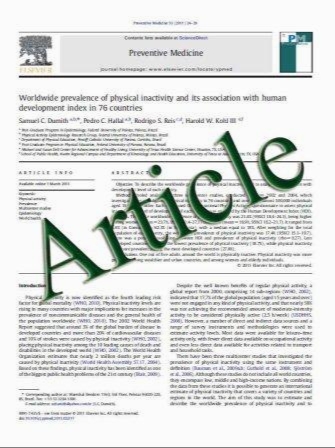Genotyping of intron 22-related rearrangements of F8 by inverse-shifting PCR in Egyptian hemophilia A patients
- نوع فایل : کتاب
- زبان : انگلیسی
- مؤلف : Heba Abou-Elew & Hanan Ahmed & Hanan Raslan & Magy Abdelwahab & Rania Hammoud & Doha Mokhtar & Hanaa Arnaout
- چاپ و سال / کشور: 2010
Description
Hemophilia A (HA) is the most common severe bleeding disorder in humans, affecting one in 5,000 male births. In severe HA, intron 22 inversion of F8 is the most prevalent mutation, accounting for 40–50% of all mutations; however, little is known about the disease-causing mutations among Egyptian hemophiliacs. We aimed at genotyping all possible known DNA rearrangements of intron 22 of F8 in Egyptian HA patients. Peripheral blood samples were collected from 30 Egyptian HA patients (13 severe, ten moderate, and seven mild cases). Genotyping of F8 intron 22 rearrangements was performed by inverse-shifting PCR (ISPCR). Our study revealed that seven patients (23.3%) had inversion 22, three patients (10%) had deletion 22, and 20 patients (66.7%) carried the wild-type allele. No intron 22 duplication was detected. The relative proportion of inversion 22-type 1 to inversion 22-type 2 was 85.7% and 14.3%, respectively, whereas the relative proportion of deletion 22- type 1 to deletion 22-type 2 was 33.3% and 66.7%, respectively. A statistically highly significant relation was found between disease severity and F8 intron 22 rearrangements (p=0.008). Among severe cases, 46.1% had inversion 22, 23.1% had deletion 22, and 30.8% carried the wild-type allele. We conclude that F8 intron 22 inversion/deletion is responsible for about one third of disease-causing mutations among Egyptian hemophiliacs and for nearly 70% in severe cases. In addition, F8 intron 22 inversion/deletion by IS-PCR has proven to be a rapid and robust technique and might be the recommended tool for genetic analysis of HA patients specially with severe cases in developing countries.
Ann Hematol (2011) 90:579–584 DOI 10.1007/s00277-010-1115-x Received: 14 May 2010 / Accepted: 2 November 2010 / Published online: 12 November 2010


